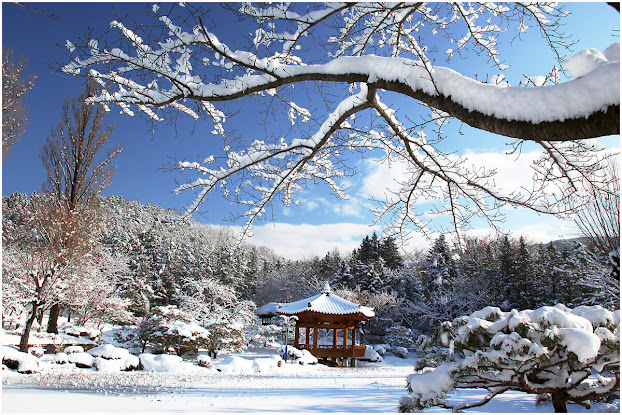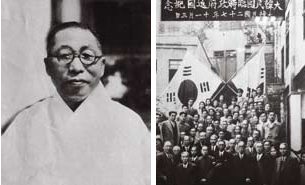Winter in Korea
Winter in Korea usually starts between December and February, with the coldest temperatures appearing in January reaching minus 3 to 6 degrees Celsius. The days with the lowest temperatures usually occur between the middle and the end of January. In winter, the days are shorter, the sun is rising slowly and the sun is setting early. Usually a cycle of three cold days followed by four warm days called Samhansaon is always repeated during the winter.
The
mountainous areas of Gangwon-do province have been snowing since the beginning
of winter, with temperatures getting colder and drier as the winds blow from
Siberia. Between December and February there are major holidays, namely:
Christmas Day, New Year's Day, and Chinese New Year's Day. Meanwhile, February
to early March is the time for graduation and the start of school. For rural
areas, during the winter the farmland stops for a short break until it is time
for planting in the spring, and several types of vegetables are grown and grown
in the greenhouse. Between November and December, there is usually a
large-scale preparation of kimchi that can be consumed throughout the winter.
The process of preparing Kimchi on a large scale is called Gimjang.
*
Samhansaon phenomenon (Three cold days and four warm days)
Samhansaon
is a term that refers to the phenomenon of 'three cold days followed by four
warm days'. This climate is common in the Northeastern region of China and
Korea during winter. This phenomenon continues in a seven-day cycle with high
and strong continental pressure then weakening. The average high pressure with
an up and down cycle occurs for 3 to 4 days, so this phenomenon is called
Samhansaon (three cold days and four warm days). Although climate change
generally occurs in a 7 day cycle, it becomes difficult to predict due to
climate change.
*Gimjang
Gimjang
is a term that refers to the preparation of making Kimchi on a large scale so
that it can be consumed during the winter. Kimchi preparation on a large scale
is a special moment in Korean household life, and is usually done between late
autumn and early winter. Kimchi made during this period is called Gimjang
Kimchi. Korean chicory is the main ingredient for making Kimchi, and the seasoning
is made from radish, wet small prawns, garlic, onions, ginger, salt, salted
fish, and red chili powder. Gimjang Kimchi is carefully stored for winter
supplies.
Source
: https://www.visitkorea.or.id/article/musim-dingin-di-korea




Komentar
Posting Komentar